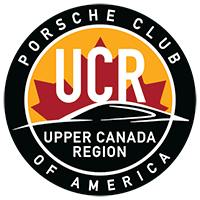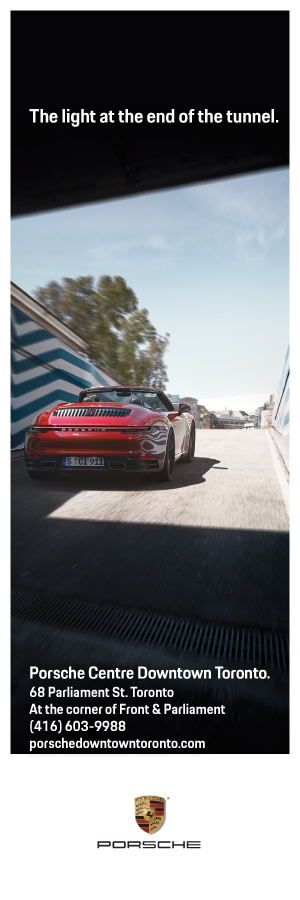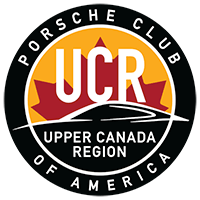Little known facts about Ferdinand Porsche’s birthplace
A FEW YEARS AGO, reading in the factory magazine, Christophorus, that the Austrian Mint was issuing a 50 schilling coin bearing the likeness of Professor Ferdinand Porsche reminded me that he was not actually a “native son” of Austria, at least not if you look at today’s European borders. A great man to be sure, but if any country wants to take credit for being his birthplace it should be the Czech Republic. Nonsense, you say? Read on and learn!
On our Porsche AG-sponsored European trip in 1995 we were able to trace Porsche family history back to a small garage in Gmund, Austria, where the first 356 was built, but not further back. It seems that the Porsche birthplace, a town called Maffersdorf, had disappeared from current maps. It is shown briefly on one of the historical videotapes we viewed at the private museum in Gmund but we were unable to locate it on any map, no matter how detailed.
Your dogged reporter and occasional genealogist has found what was lost.
Hauptstrasse 38: This was how the address on the main street of Maffersdorf looked like 143 years ago. The grounds included the family residence and attached workshop of Anton Porsche and his wife Anna. It was here, on September 3, 1875, that the third of their five children—Ferdinand—was born.
Ferdinand Porsche was born in 1875 and lived at 38 Hauptstrasse, Maffersdorf, not far from the pharmacy, on the left side, as you go towards the church. The Porsche family was long-established in Maffersdorf. Father Anton was a tinsmith and plumber and founded the Building Educational Society, founder and captain of the Maffersdorf fire department, Vice-Mayor and held other important posts as well. Clearly, well known and well respected.
Maffersdorf. The village is 110 km northeast of Prague, in Bohemia, Czech Republic. Lost to me until an Internet genealogy acquaintance in Slovakia pointed out its new name, Vratislavice nad Nisou. The street where he lived is now called Tanvaldske Ulici.
In 1923 Ferdinand Porsche builds this villa in country-manor style at Feuerbacher Weg 48, Stuttgart.
Ferdinand Porsche was born in Maffersdorf on September 3, 1875, the third of five children. The house where he was born is still standing and in recent years underwent renovation and was put to different uses. After the break up of the Austro-Hungarian Empire, he became a Czech citizen because it provided him with the best opportunity for European travel since the family was located in the Czech area. In 1935, Ferdinand Porsche was granted German citizenship.
When Ferdinand was 11, Benz and Daimler built a single-cylinder motorcar. At about the same time, Edison’s electric light became known in Maffersdorf. Young Ferdinand knew little of the automobile but was fascinated by electricity and began to experiment with it. His father’s plumbing profession was of less interest. He worked on his hobby secretly in the attic because his father forbade him to work with electricity.
The town of Steyr: Ferdinand Porsche’s contract at Daimler in Stuttgart was not extended in 1928, and he moved to Steyr-Werke in Upper Austria as technical director in early 1929.
In 1891, at age 15, while his father was away working in a nearby village, young Ferdinand installed electricity in the family home. He built a generator and switchboard and installed lighting, door chimes and an intercom. Their home was the second in town to be electrified, the first being the carpet factory.
Ferdinand attended elementary school in Maffersdorf and the State Industrial School at Reichenberg (now Liberec), just up the road. In 1893, Ferdinand joined Vereinigte Elektrizitätswerke AG in Vienna. After apprenticeship he worked as a mechanic and became head of testing operations within four years. Ferdinand did eventually become involved with the automobile. In 1897 he designed an electro-motor located in the wheel hub of the vehicle.
Located in an Alpine pasture above the town of Zell am See, this six-hundred-year-old estate catches the eye of Ferry Porsche while on a drive in the 1930s. Ferdinand Porsche buys the estate in 1941. The family initially uses the estate as a vacation home and later as a refuge from the turmoil of World War II. The chapel next to the large farmhouse houses the family burial grounds. To this day, the Schüttgut estate is a working farm with 140 cattle. It now belongs to Dr. Wolfgang Porsche.
He joined Lohner & Co. in 1898 and in 1900 his wheel-hub-engine Lohner-Porsche Chaise was a huge success in the Austrian Pavilion at the World’s Fair in Paris. The vehicle was built in only ten weeks. After only four years, he was a company director. In 1903, he brought his new bride to Maffersdorf in the Lohner-Porsche. That must have been an exciting sight for the townspeople.
His later life has been well documented in a variety of books. However, the village of Maffersdorf is little known, though even today some townspeople are proud of the fact that Ferdinand spent his formative years in their town. The Porsche name no longer appears in the region. But on September 9, 2000, just after the 125th anniversary of his birth, a commemorative plaque was unveiled on the Porsche home at 38 Tanvaldske Ulici, Vratislavice nad Nisou.
The birthplace of Porsche automobiles: After the Allied bombing raids of Stuttgart in late 1944, Ferdinand Porsche moves his company to a former sawmill in the town of Gmünd in the region of Carinthia. Until the end of the war, the Porsche engineering office works on military projects. From 1946 it’s the production site of light tractors, winches, and hydraulic turbines. In 1948 Ferry Porsche realizes his vision of the perfect sports car—the Porsche 356. The company’s first two-seater receives chassis number 356-001.
Back then, the Porsche story had been documented and the house captured in photos. The Porsche Club ?eská Republika carries the club banner locally. I met with them in Brno in 2007 but they said it wasn’t worth travelling to Vratislavice to see the house. It served as a children’s wear store with a small hydraulic hose shop in back.
Now, another chapter has been added to the story.
Hauptstrasse 38 is fully restored and known today as: Tanvaldská 38 in Vratislavice nad Nisou. Now in the Czech district of Vratislavice. The estate was bought by Czech carmaker Škoda in 2011 and later converted to its present form as a museum.
Christophorus issue #381 tells us that the estate was bought by Czech carmaker Škoda (now a subsidiary of VW) in 2011 and converted to its present form, a museum which “highlights how the designs and inventions of Porsche still shape the automotive world today.”
Well then, that serves as good reason to make the 110 km trip from Prague to Vratislavice on any Friday through Sunday for a visit! Time will tell on when that happens. </>
Photos courtesy of Porsche AG
The local museum at Tanvaldská 38 in Vratislavice nad Nisou, has Dr. Porsche’s electric wheel-hub-engined Lohner-Porsche Chaise on display along with other Porsche inventions.


















